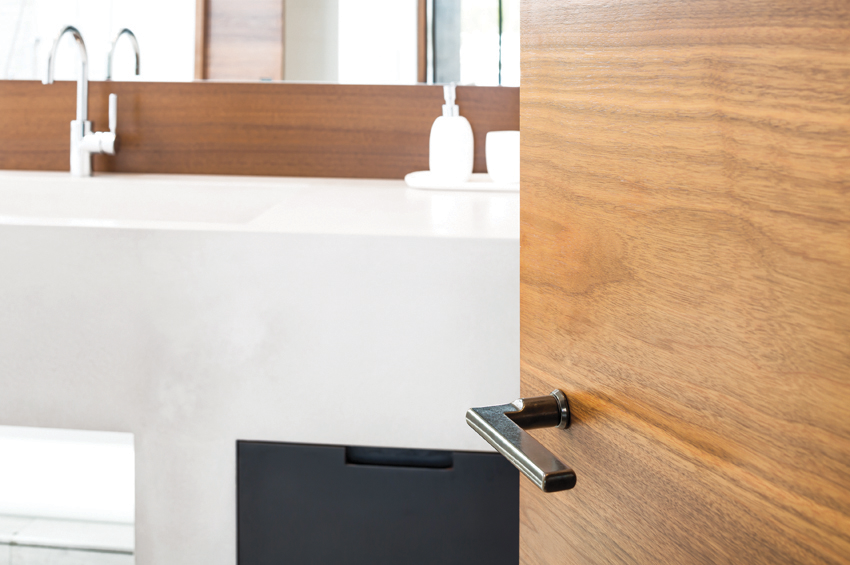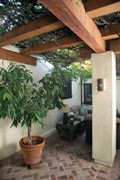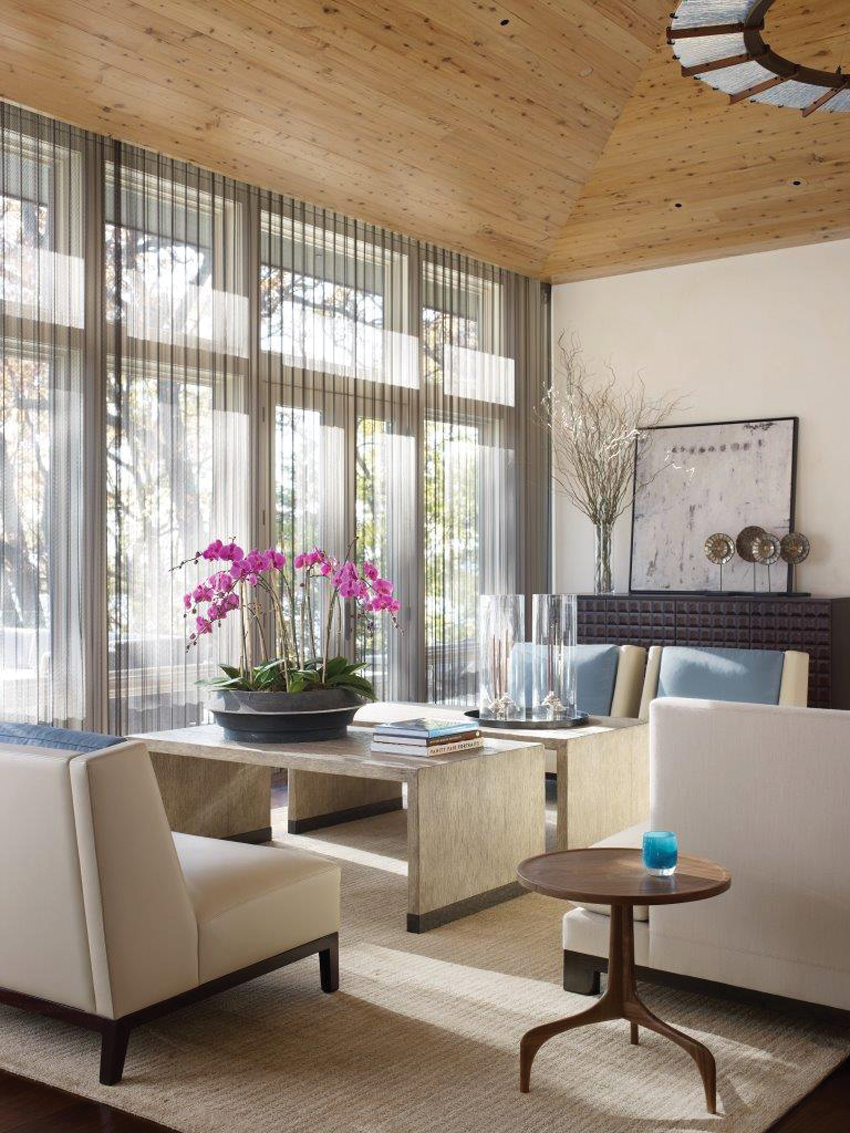Designing for the Contemporary Custom Home
Satisfying Multiple Design Goals
When specifying products and materials for a custom home, every design choice must fall within the budget and meet the client’s aesthetic criteria. However, many materials and products must also perform other important functions—for example, contribute to energy performance, facilitate daylighting, and/or enhance the comfort, safety, and security of the home. Increasingly, homeowners have come to expect “connected” products that promise additional convenience or energy savings—appliances that can be controlled and monitored via a smartphone, for instance—and these features must be integrated without compromising the home’s aesthetic.
If one of the client’s goals is reducing the proejct’s environmental impact, the product must also be weighed for its impact on carbon emissions, waste, and depletion of natural resources. It is a complex task, and one that requires an incredible degree of expertise on the part of the design professional, on whom the client relies for guidance.
Let us consider some specific examples that demonstrate how a design choice can satisfy multiple goals while contributing to the overall aesthetic of the home.
Combining Timeless Style with Smart Technology
Door and cabinet hardware makes an important aesthetic statement. It is one of the first things you see—and touch—when you enter a home. High-quality hardware can complement doors and cabinetry, working with the style of the doors and drawers to help create a coherent style. Often, hardware is made with hand-cast metal—a natural complement to many species of finished wood, which is frequently used for contemporary doors and cabinets.
As something that is frequently handled, pulls, knobs, and other hardware must be ergonomic: pleasing to the touch and easy to use. On entry doors, hardware also performs an important security function. The mechanisms must be durable and reliable after repeated use.
“Smart locks” are also becoming increasingly popular. These offer several advantages: They do not require a physical key, which can be easily lost or misplaced, and the keyhole does not wear from excessive use. The lock can be customized so that each authorized person has a customized entry code, and often it can be controlled or programmed remotely with a smartphone. Many smart locks are compatible with smart home systems, such as Amazon Alexa or Nest. This way, the lock can be controlled by voice and/or synced with other smart home devices and programmed to trigger certain actions—for example, when the door unlocks, an entry light may switch on.
At least one manufacturer offers a Bluetooth-compatible smart lock that is available in any of the company’s hardware collections. All of the technology components are hidden within the mortise pocket so that it does not detract from the style of the piece. The lock still accepts a standard key in the event that the Bluetooth lock should fail.

Photo courtesy of Rocky Mountain Hardware
With minimalist and sleek profiles, these handles feature art-grade bronze, which elegantly complements the design of any door.
Coiled Wire Fabric Panels for Daylighting and Sun Control
Well-designed daylighting is critical for achieving a warm and welcoming interior in contemporary homes and for indoor and outdoor spaces. However, controlling glare and unwanted heat gain is critical. Designers often solve this problem with a combination of fixed and operable design strategies. For instance, awnings and overhangs, along with proper building orientation and the location, size, and number of windows, can control how much light enters the home at certain times of the year. However, these solutions often do not completely eliminate unwanted solar gain and glare and must be employed in tandem with movable or operable elements, such as shades, dividers, and/or retractable awnings.
All of these options are highly visible and must match the home’s aesthetic while serving their important function. If they are installed on the home’s exterior or in outdoor rooms or patios, they must also stand up to the elements, resisting rot, mildew, and insect infestation. In some cases, they must even protect windows against wind-borne debris and other impacts.
Hence, the material construction of shades or other sun control device is critical. Metal, whether brass, aluminum, or stainless steel, is a good choice for durability and weather and insect resistance. Shades and dividers can be made with a fabric made from coiled metal wire, which can be manufactured using a wide variety of metals and in various gauges, scales, colors, and finishes. The versatility of the fabric makes it ideal for a range of performance and design criteria.
Coiled wire fabric panels allow for the diffusion of both natural and artificial light throughout spaces. When used in window applications, this woven wire mesh facilitates daylighting, filtering sunlight without disrupting views to the exterior. Daylighting both helps reduce energy costs, as less artificial lighting is required, while providing a healthy, appealing environment for occupants.
Coiled wire fabric panels can also be used to control solar gain and glare—again, without compromising views or daylighting. This saves the homeowner energy costs, especially in cooling climates where summers are hot.
Whether used inside or on the home’s exterior, the panels become strong architectural elements that can be adjusted by selecting the type of metal, finish, thickness, and gauge of the weave. Even though the fabric shares the same basic construction, these variations can create everything from straight rectilinear panels to billowing drapes.
“When we think of sun control and rainwater retention, we are always searching for products that complement our palette of exterior materials,” says Thomas Clapper, LEED AP, senior associate, architect, Walker Warner Architects. “Coiled wire fabric is a natural choice for us. Whether we use it as a 20-foot-long rainwater diverter or a movable panel to cut the harsh sunlight, we are always delighted by the results.”
Notice

www.cascade-architectural.com

www.getredwood.com

www.rockymountainhardware.com










